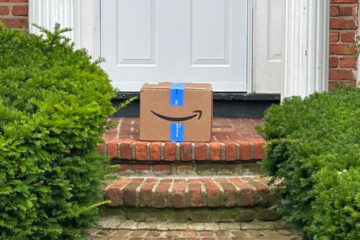One of the best ways to tell whether an economy is on the upward or downward trend is by looking at how well restaurants are doing.
By and large, eating at a restaurant isn’t a necessary expense.
Related: Iconic retail chain begins going-out-of-business sales
Unlike core grocery staples, like butter, milk, or eggs, you don’t need to buy a meal out regularly. Sure, it’s a nice luxury to have, but that’s exactly what it is. A luxury.
So when consumer prices go up and it gets more expensive to afford basic necessities like fuel, rent, or medicine, most Americans will cut back on discretionary spending. And one of the first expenses to go is the budget for dining out.
“Over 40% of low-income U.S. adults claim to be visiting quick service restaurants (QSRs) less often for dinner and lunch than at the start of this year,” Ipsos executive VP Wendy Wallner said of declining restaurant sales.
In fact, about 33% of Americans said they’ve been reducing their budget for all types of dining out; that includes fast food and drive-thrus, delivery, and sit down meals, per Ipsos.
A burger and fries at Red Robin.
Image source: Shutterstock
Dining out is more costly
If it feels like your most recent check at a restaurant was pricier than before, you aren’t imagining things.
The February Consumer Price Index found that February prices rose 0.2% overall, compared to 0.5% in January.
More closings:
Another struggling mall retail chain closing more storesStruggling supermarket chain closes more locationsPopular bank closing dozens of branches (locations revealed)
Here’s how various foods changed over the past month from January to February:
Food overall: increase 0.2%Food at home: steadyFood away from home: increase 0.4%Meats, poultry, fish, and eggs: increase 1.6%Cereals and bakery products: increase 0.4%
“The food away from home index rose 0.4 percent in February,” the CPI found. “The index for full service meals rose 0.4 percent over the month and the index for limited service meals rose 0.3 percent.”
For the full year, the cost of full-service (or sit down) meals was up 3.7%.
Top burger chain closing locations
Since it’s getting pricier to dine out, customers are getting choosey about when and where they put their dollars.
Since most of us are spoiled for choice when it comes to restaurants, our dollars get spread out to many different options. Customer loyalty is no longer something most chains can rely on.
And now, Red Robin, a popular burger chain, has said it’s going to begin closing locations as costs rise and foot traffic declines.
Red Robin says it will close up to 15 underperforming restaurants in 2025 alone. It could close up to 70 locations over the next several years.
Related: Global retail chain closing most stores, no bankruptcy yet
In fiscal 2024, Red Robin saw a net loss of $77.5 million, up from $21.2 million in fiscal 2023.
Red Robin is embarking on what it calls a North Star turnaround plan, where it will close 10-15 underperforming locations each year as leases expire.
But CEO G.J. Hart thinks the turnaround plan could salvage Red Robin from meeting a fate some of its competitors, like Red Lobster, met in 2024.
“While financial results for 2024 fell well below our original expectations, we’ve made substantial improvements to the guest experience and believe we still have a significant opportunity ahead of us to reach the full potential of our iconic brand,” Hart said.
Red Robin currently operates about 500 locations.


